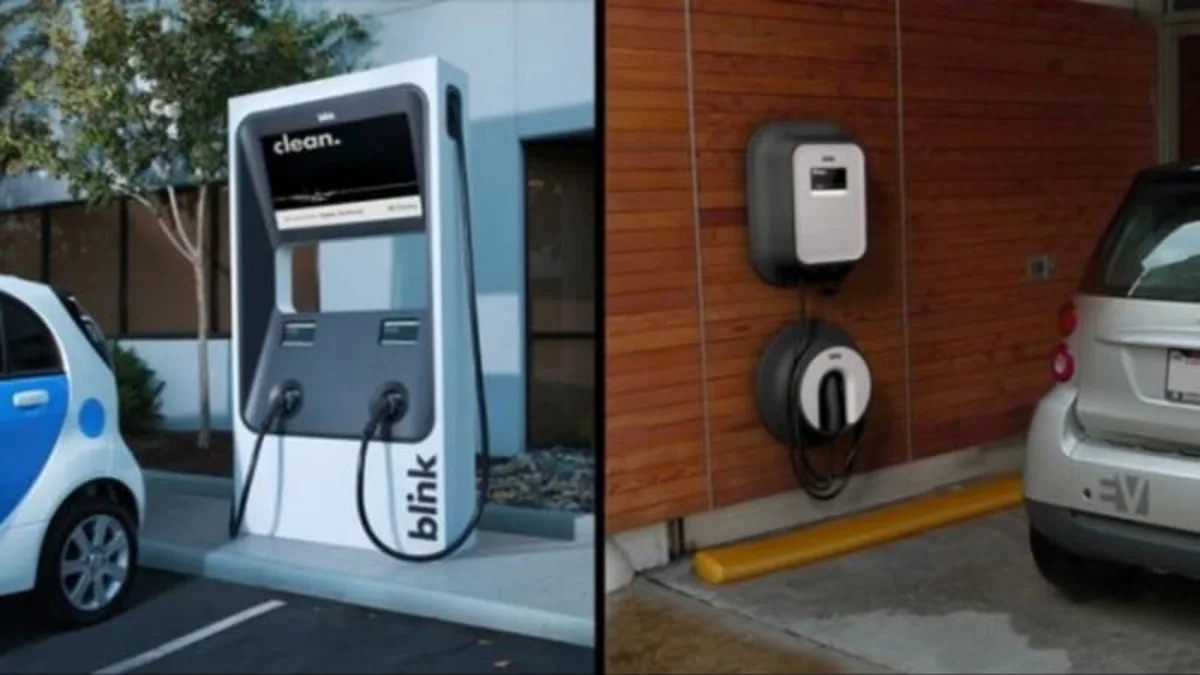Plug-in vehicle drivers being tracked by Ecotality in the EV Project are revealing some interesting tidbits about home and public charging habits. Ecotality is collecting data on the driving and charging patterns of about 6,000 US plug-in electric vehicle owners, and has found out that plug-in hybrid vehicle owners are more likely to use workplace and other public charging stations than those in battery electric vehicles. Yes, if you have a gas engine backup, you're plugging more. It sounds counter-intuitive, but there is a logic at work here.
The public-private, multi-year EV Project is gives away Blink home-charging stations to plug-in vehicle drivers of cars in both of these plug-in electric categories, embodied in both the Chevrolet Volt and Nissan Leaf. According to the data – collected over 43 million plug-in miles – Leaf drivers are choosing to charge more at home – 89 percent of the time and are plugging in 1.1 times per day – while Volt drivers plug in away from home 21 percent of the time (compared to 11 percent for Leaf drivers) and tend to charge 1.5 times per day.
Part of the reason is that the Nissan Leaf has about twice the battery-powered range, around 70-80 miles, than the Chevy Volt, which tends to go around 35-40 miles on battery power. It only makes sense that Leaf owners would be charging more at home, often plugging in when they come from work and unplugging before leaving the next time. Volt owners pay more for their extended range car, but then apparently want to drive more miles on electricity than gasoline to save money. This year, the US auto market has been seeing more plug-in hybrids purchased than pure electric vehicles and the ratio of plug-in hybrid to pure electric is expected to reach two to one. According to Ecotality, with that shift comes a desire for more public charging stations.
Find more on charging habit research here.
The public-private, multi-year EV Project is gives away Blink home-charging stations to plug-in vehicle drivers of cars in both of these plug-in electric categories, embodied in both the Chevrolet Volt and Nissan Leaf. According to the data – collected over 43 million plug-in miles – Leaf drivers are choosing to charge more at home – 89 percent of the time and are plugging in 1.1 times per day – while Volt drivers plug in away from home 21 percent of the time (compared to 11 percent for Leaf drivers) and tend to charge 1.5 times per day.
Part of the reason is that the Nissan Leaf has about twice the battery-powered range, around 70-80 miles, than the Chevy Volt, which tends to go around 35-40 miles on battery power. It only makes sense that Leaf owners would be charging more at home, often plugging in when they come from work and unplugging before leaving the next time. Volt owners pay more for their extended range car, but then apparently want to drive more miles on electricity than gasoline to save money. This year, the US auto market has been seeing more plug-in hybrids purchased than pure electric vehicles and the ratio of plug-in hybrid to pure electric is expected to reach two to one. According to Ecotality, with that shift comes a desire for more public charging stations.
Find more on charging habit research here.


Sign in to post
Please sign in to leave a comment.
Continue